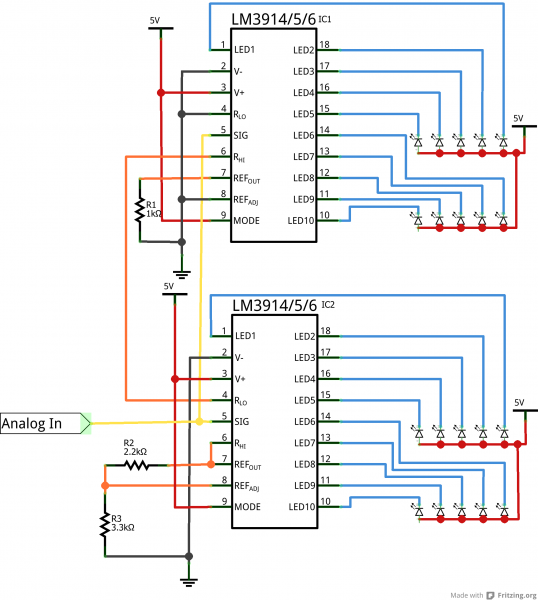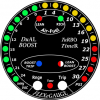fezder
Well-Known Member
Right, so i took audiogurus advice earlier and bought LM3915 (or was is 16 suggested? won't matter much i suppose.....)
Now, with one, works as intended, at first leds light easily then harder. Troubles began when i placed two in following circuit:
the example on page 14 (opamp version) works as intended.
The problem is, the first 10 leds work well in log. manner, BUT the next one, it works like first one, i mean first leds light EVEN easier than first on first 10 leds, Shouldn't those first leds light up on second bar harder than previous bar's last ones, like if they'd continue working on 3db ladders?
capacitors i have as follows:
2.2uf from led's anodes to ground (both bars)
0.1uf accross r3
100uf at power bus
tried changing ic's in case faulty is in game.
for testing i use now potentiometer to supply analog signal (voltage divider) to signal input
And, supply voltage is 12v, even for led's
Probadly this is another some foolish error i've made in circuit....



Now, with one, works as intended, at first leds light easily then harder. Troubles began when i placed two in following circuit:
the example on page 14 (opamp version) works as intended.
The problem is, the first 10 leds work well in log. manner, BUT the next one, it works like first one, i mean first leds light EVEN easier than first on first 10 leds, Shouldn't those first leds light up on second bar harder than previous bar's last ones, like if they'd continue working on 3db ladders?
capacitors i have as follows:
2.2uf from led's anodes to ground (both bars)
0.1uf accross r3
100uf at power bus
tried changing ic's in case faulty is in game.
for testing i use now potentiometer to supply analog signal (voltage divider) to signal input
And, supply voltage is 12v, even for led's
Probadly this is another some foolish error i've made in circuit....









